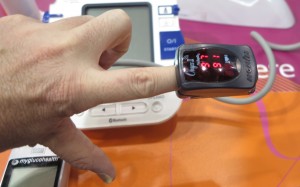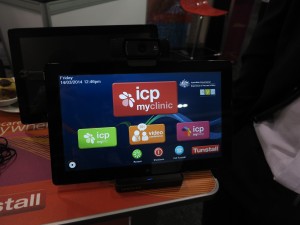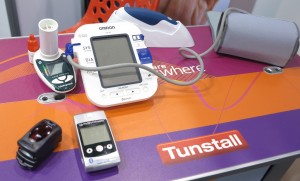Another effort to turn a smartphone in to a pathology lab
Article
Researchers create tech that turns your smartphone into a medical diagnostic tool | Fast Company
University resources
My Comments
In most situations, pathology testing has required that the samples be sent away to a central laboratory to be analysed in to something meaningful for the professionals who prescribe them. This would typically take more than a day unless the laboratory was co-located with the facility that collected the sample such as in a hospital.
But there are some steps being taken to use a common smartphone as the equivalent of a pathology lab for most of the common tests. The goal with these devices is to allow the analysis of the sample and communication of the results to the end-user with a very short lead-time.
The first one of these solutions was a portable spectrograph device developed by Columbia University that connected to a smartphone’s headphone jack and worked with a special app to identify the presence of pathogens associated with certain diseases. There was also a view to have it work with less-expensive devices that could run user-installed software like the iPod Touch or low-tier Android phones, along with the ability to work on very low power.
The second one of these solutions attaches to an existing compatible smartphone and makes use of that phone’s camera and LED “flash” light to analyse the sample. It could also be set up to work with an integrated green-light laser diode as an alternative analysis light source.
This time, the sample of blood, saliva or urine is collected in a special microfluidic cartridge which means that the same “lab” could be used for multiple tests. There is a goal with this technology to adapt most of the common pathology tests to be performed with this hand-held “path-lab” and the goal can be achieved by reprogramming the software that is the companion app for this device to suit the test.
Personally, I would see these technologies initially work with the common ailment-specific “screening” tests or various “wellness” tests like cholesterol tests. There will also be an appeal to implement them with various drug tests where there isn’t a goal to achieve forensic-level accuracy. Similarly, medicine-level tests associated with chronic-illness treatment could be evolved to this technology.
But why is the idea of purposing a smartphone or similar device as a portable pathology lab appealing?
The key driver is to obtain there-and-then results suing highly-portable cost-effective equipment.
One use case is to do one or more pathology tests on a patient as they are transported in an ambulance to hospital and have the results communicated to the emergency department before the patient arrives. This also extends to situations where there are many casualties such as on a battlefield or other disaster zone. In this case, the smartphone with the handheld “path-labs” would be able to provide better-quality information for on-site treatment teams, rather than having to transport many samples to ultra-busy laboratories who may not communicate the results in time.
The rural community will also benefit in the context of routine tests especially where the nearest capable pathology lab is a long distance away from the village or town. Here, flying-doctor services, district nurses and the like can perform the common tests at the patient’s home and pass them on to regular general-practice doctors or specialists as well as making the patient and carer known of these results. It also augments the use of mobile devices as part of telemedicine efforts that can benefit this community.
But the same situation also applies to delivering healthcare in to third-world countries, something typically facilitated by the many volunteer organisations who answer this need. Here, the volunteer organisations can use this technology for identifying disease risks or organising the right treatment in a “there-and-then” manner.
Then there is the ability to use this technology as part of at-home healthcare programs including supporting the concept of ageing-at-home. This can be about using it as part of medicine management or monitoring long-term illnesses and assessing the effect of treatments without needing to go to a doctor’s clinic or hospital.
What is being seen here is the ability for cost-effective smartphones and similar highly-mobile devices that are based on platforms that support user-installable software to be used as part of personal healthcare in any part of the world.






